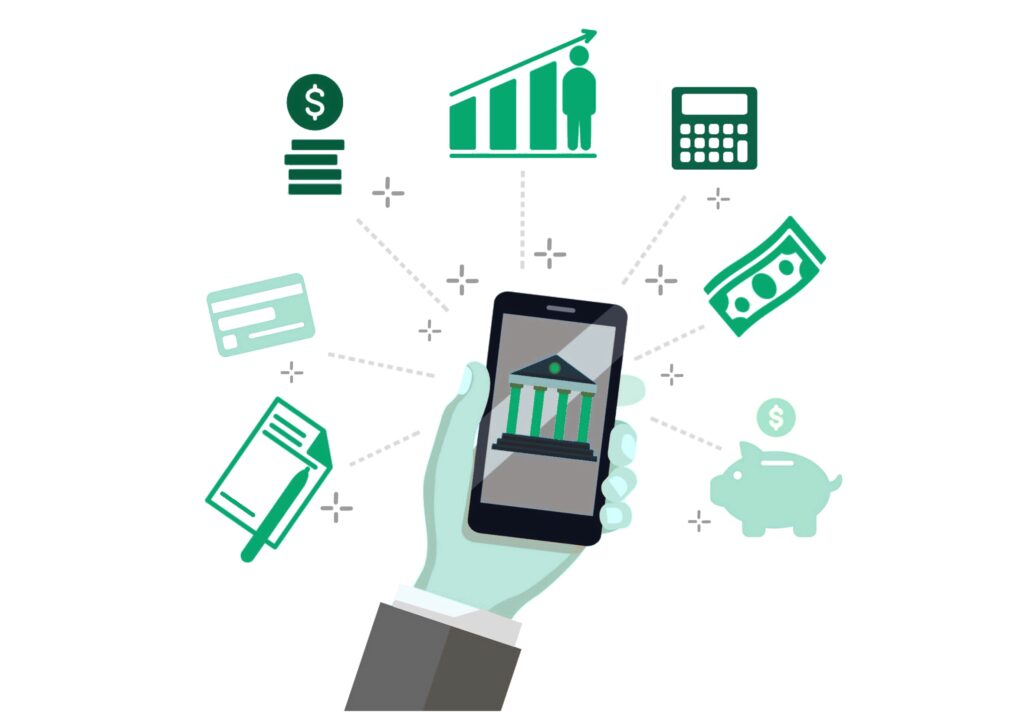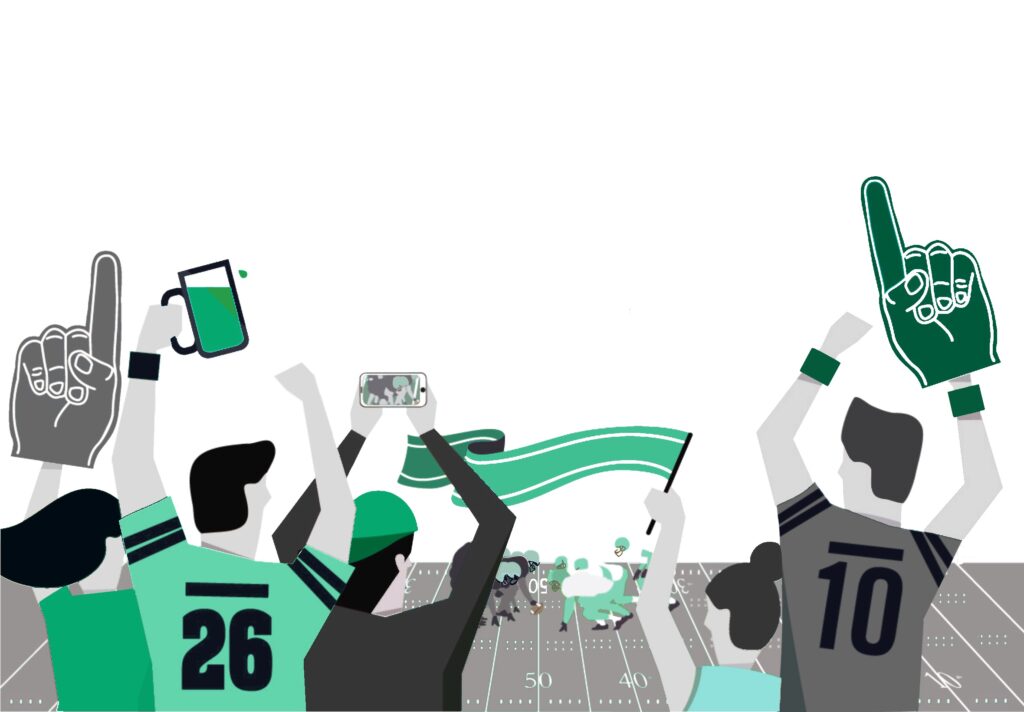
Fintech is on the rise, expected to reach $700 billion in market size by 2030. Customers increasingly want to do things digitally, and they expect increasingly sophisticated tools to support them. The pandemic era catalyzed this shift, incentivizing more of the population to try things online that they might have done in person. The result is a customer base rapidly gaining comfort and savvy in managing their wealth digitally.
But while fresh-on-the-market fintech start-ups may be able to keep pace with these fast-growing customer demands, it’s more challenging (and more expensive) for large financial institutions with decades of infrastructure to react similarly. This has led to a steep decline in customer satisfaction across most digital banking services, particularly in the area of mobile apps.
Large financial institutions can’t (and shouldn’t) look exactly like fintech. They’re different organizations with different goals, and it’s important to note that the very longevity that makes it harder to be agile is also a bank’s greatest asset: it represents an invaluable, decades-long track record of responsibility with people’s financial futures. That said, there are some lessons established orgs can carry over from fintech as they work to upgrade their customer experience. Read on for Grand Studio’s take on four trends worth considering at your organization.
Trend 1: Biometric Authentication
Money is emotional, and banks have long since understood the need to give clients a sense of safety and security with their assets. But what people view as “secure” in the digital world can vary widely from person to person. Furthermore, there’s a spectrum of what people are willing to exchange for that security — is it worth this extra step? Is it worth fishing out an account number I may not have memorized? In our fast-paced world, time delays can be a huge hindrance.
Something with the potential to hit the marks on both security and convenience is biometric authentication. People are gaining more comfort using their faces and fingerprints to log in, and body parts aren’t typically something you accidentally leave in a file cabinet. If research shows that your customer base is ready to accept biometric authentication on its own or as part of 2FA, it’s worth looking into as a way to get high ratings on trust and security without compromising ease.
That said, it’s important to think through exactly how additional security layers should work for different customers because everyone has a different definition of what convenience means in the context of security. Some customers may feel most comfortable with one-time passcodes, while others may feel best with text verification or even a phone call. Designing and building out these various pathways can add up, so it’s helpful to get a handle on what it will involve up-front.
Trend 2: API Integration With Other FinTech Products
More and more, people expect their mobile banking apps to integrate with other products and services they use — including other banks. Some believe that designing these connection points may lose them business by making it too easy to use other fintech tools or transfer money out of their accounts. Accordingly, they may deprioritize API integration features and even build elements that contain people within their ecosystem of services. But increasingly, this turns clients off. If your suite of features don’t reflect your customer’s lifestyle, they may search for another bank whose app does.
Isolated banking services are simply not the reality for today’s clients. People often have their money in several different places, and use several different tools for budgeting, investing, and more. An app that’s vacuum-sealed at the edges will frustrate customers by not meeting them where they are. On the other hand, designing smooth ways for people to bank in ways that reflect the interconnectedness of their lives can build a more positive relationship, creating a sense that you understand how their lives work and want to support them. The freedom you offer them can help you retain them better than digital blockades.
Trend 3: AI Nudges For Better Financial Decision-Making
The percentage of people in the US who consider themselves financially healthy is dropping. People want and need support to make better decisions that maximize what they have, and set them up for a more secure future. Leveraging AI within a mobile banking app can allow you to provide smart notifications and personalized offers to your customers, helping them make good financial choices at the right time in a way that meets their goals. These nudges and coaching features can not only improve their satisfaction and goodwill towards the bank, it can also generate revenue by selling them on products and services that are a good fit for their needs.
Of course, not all AI is created equal. To benefit customers, AI features must truly support their needs, and come across as helpful and intelligent — not intrusive, annoying, or creepy. To use AI to the best of its ability, start by deeply understanding what your customers want and need to improve their financial lives. Then, use the tech power in service of those aims.
Trend 4: Interfaceless Experiences
With the proliferation of smart speakers and chatbots, people are getting more comfortable with “interfaceless” UIs that rely less on visuals and buttons and more on digitized conversation. Many fintech companies have discovered that, for certain mobile banking tasks, a quick digital chat is the smoothest and most efficient customer experience. This solution is usually a better fit for fairly straightforward, everyday transactions. A chat-based option for a simple task is more often seen as a perk, while a chat-based option for a complex task is at risk of being seen as a subpar customer experience.
It’s also wise to consider where your chatbot would pick up the baton in a customer’s journey and where it would hand it off to other services, like a human expert. This helps customers feel that their issues are being properly handled by those with the best skills for the job and imbues the bot with a sense of purpose and value. As always, it’s important to research your customer base to understand where these experiences may add meaningful support versus leaving a sour taste.
While valuable in the right use cases, interfaceless UIs may not fit every institution. For banks with a client base who is just beginning their journey into mobile banking, it may feel like too big of a leap. Once again, researching your client base will help you understand if this would add meaningful value and is the right investment for your organization at this point in time.
The Bottom Line
Financial service providers have a big mandate ahead of them to level up their digital experience amid rapidly rising customer expectations. There’s a lot to learn from fintech’s focused digital experiences that can be translated more widely across the industry. However, every organization’s path to improvement is going to be unique. Each institution comes with its own infrastructure, its own vision, its own compliance needs, and, importantly, its own unique client base. This means there’s no one-size-fits-all template for improvement, and a new feature or slate of high-impact ideas at one organization could flop at another. The best way to start is by gaining a deep and holistic picture of your organization and customers to identify the biggest leverage points for positive change. That way, you don’t risk investing time and money into tools that will only gather digital dust.
At Grand Studio, we’ve had the privilege of working with many financial institutions on the path to achieving their north-star visions. While we have developed many repeatable approaches and can recognize a variety of similar scenarios across these institutions, we also know the value of tailoring our approach to fit our client’s specific needs. We specialize in discovering what is unique about each organization and its customer base. We then assist our clients in prioritizing the best way forward with high-impact change while honoring and maintaining what they do best.
Got a digital banking project you’d like to collaborate on?
We’d love to hear from you!


